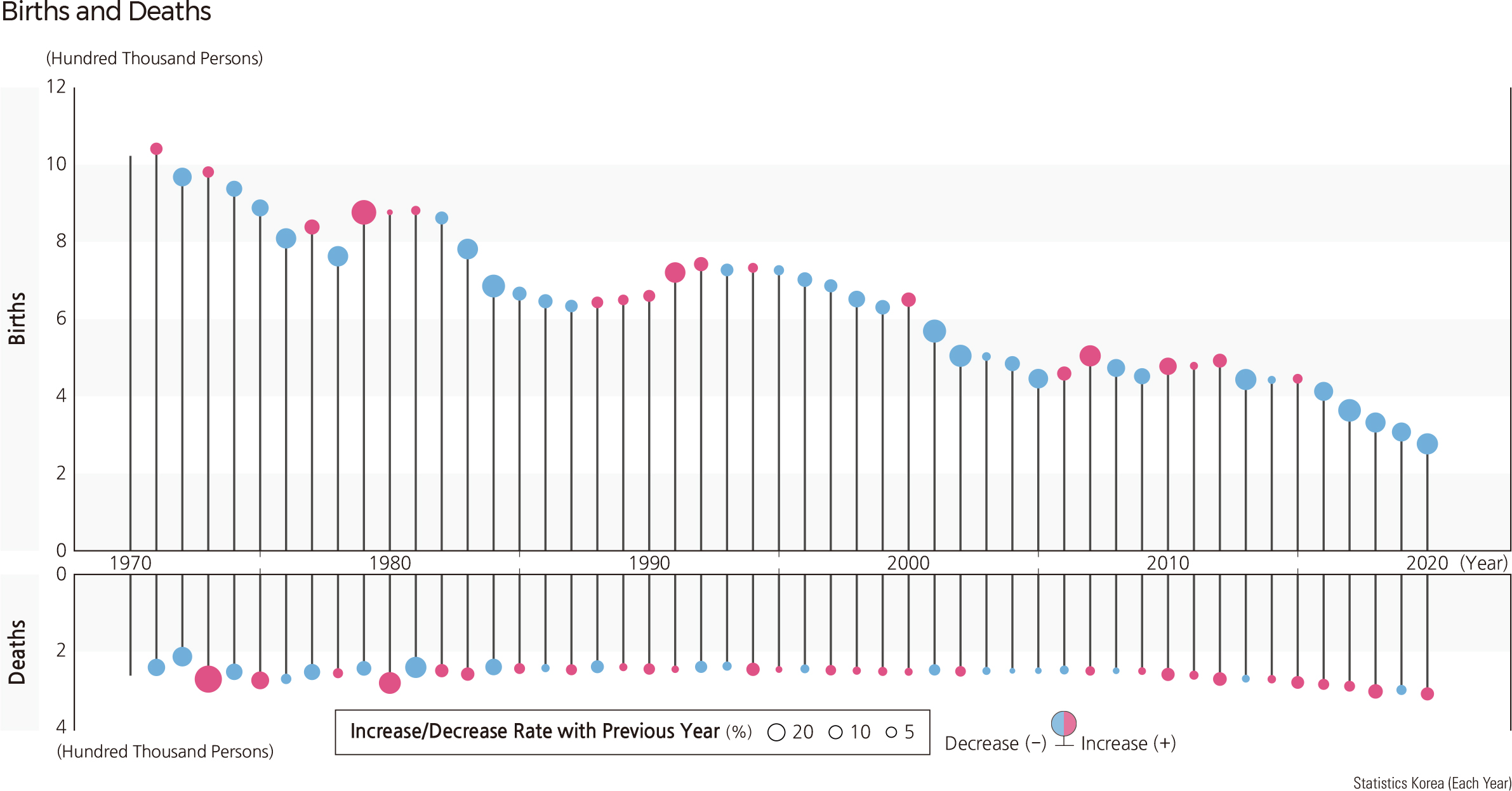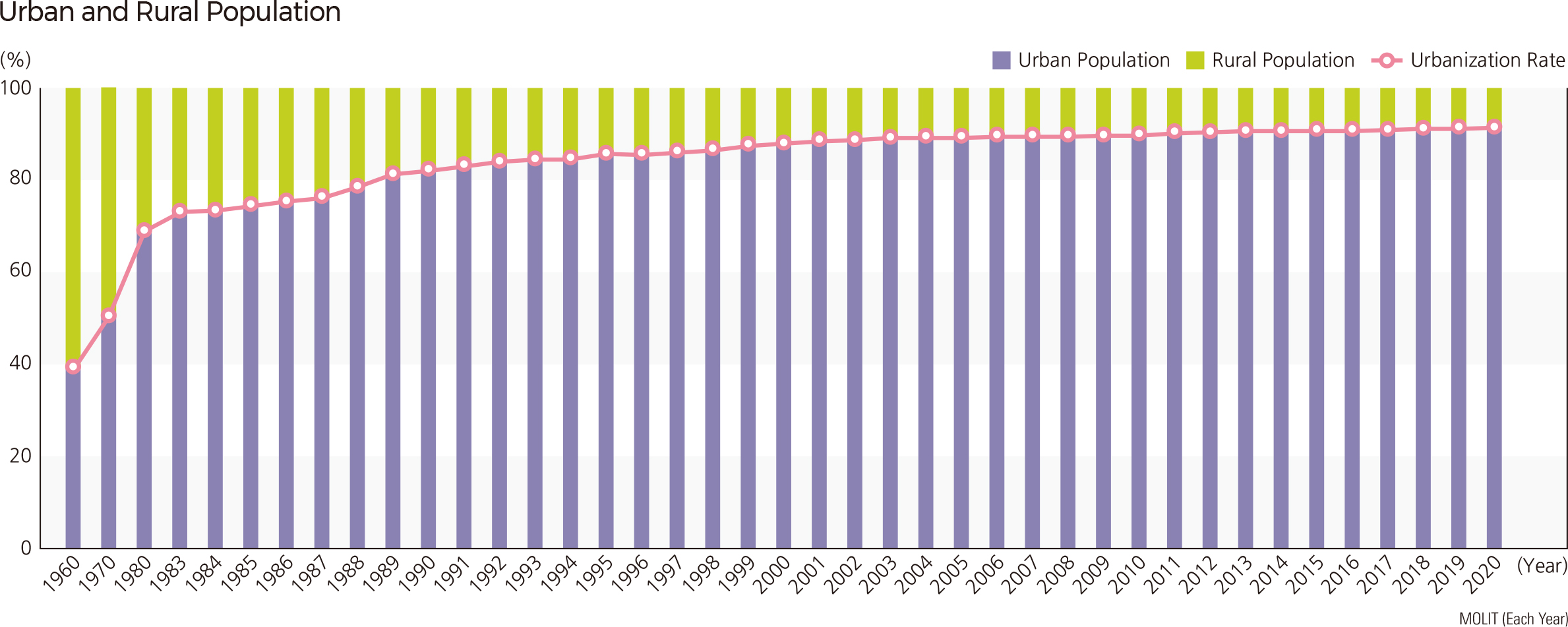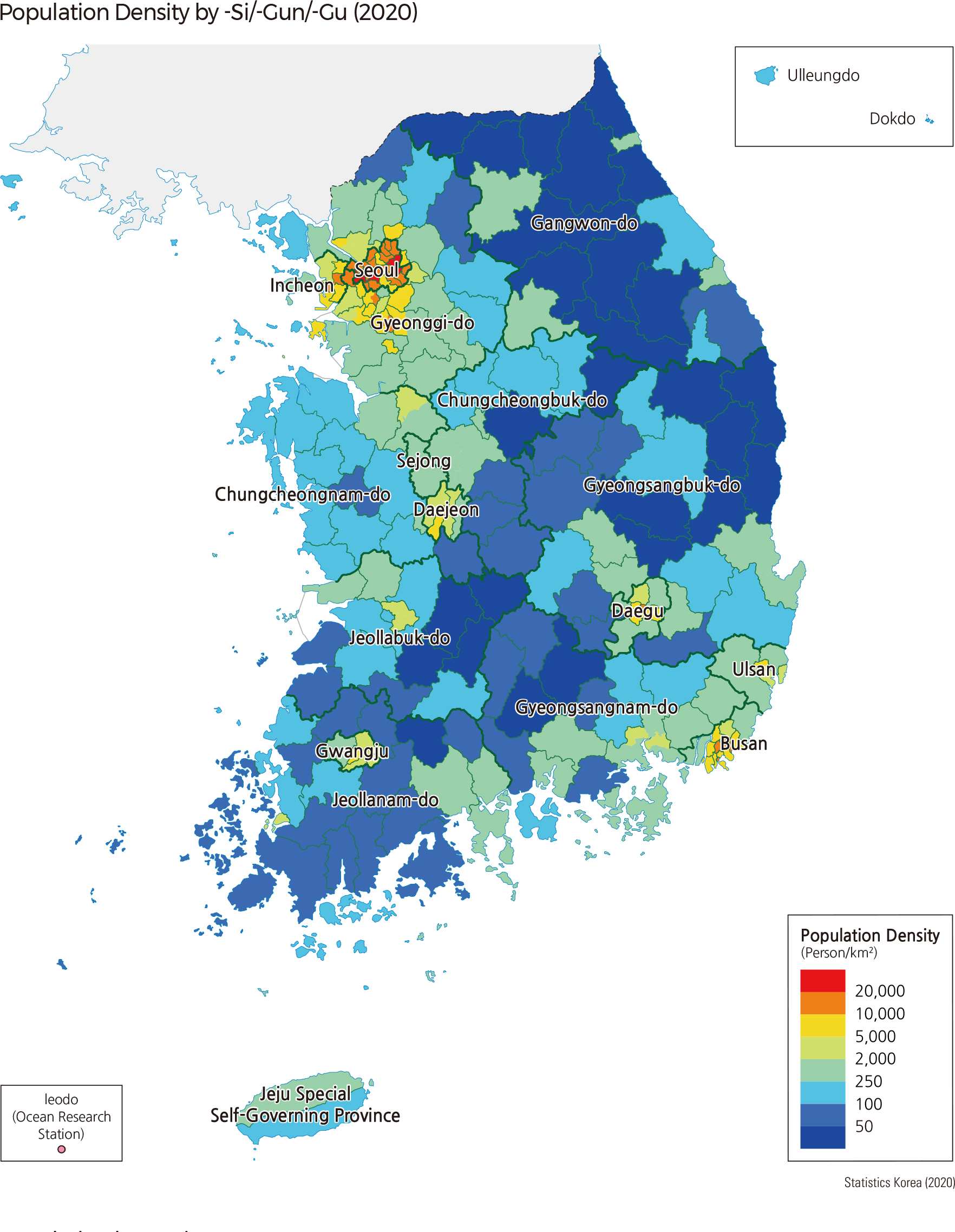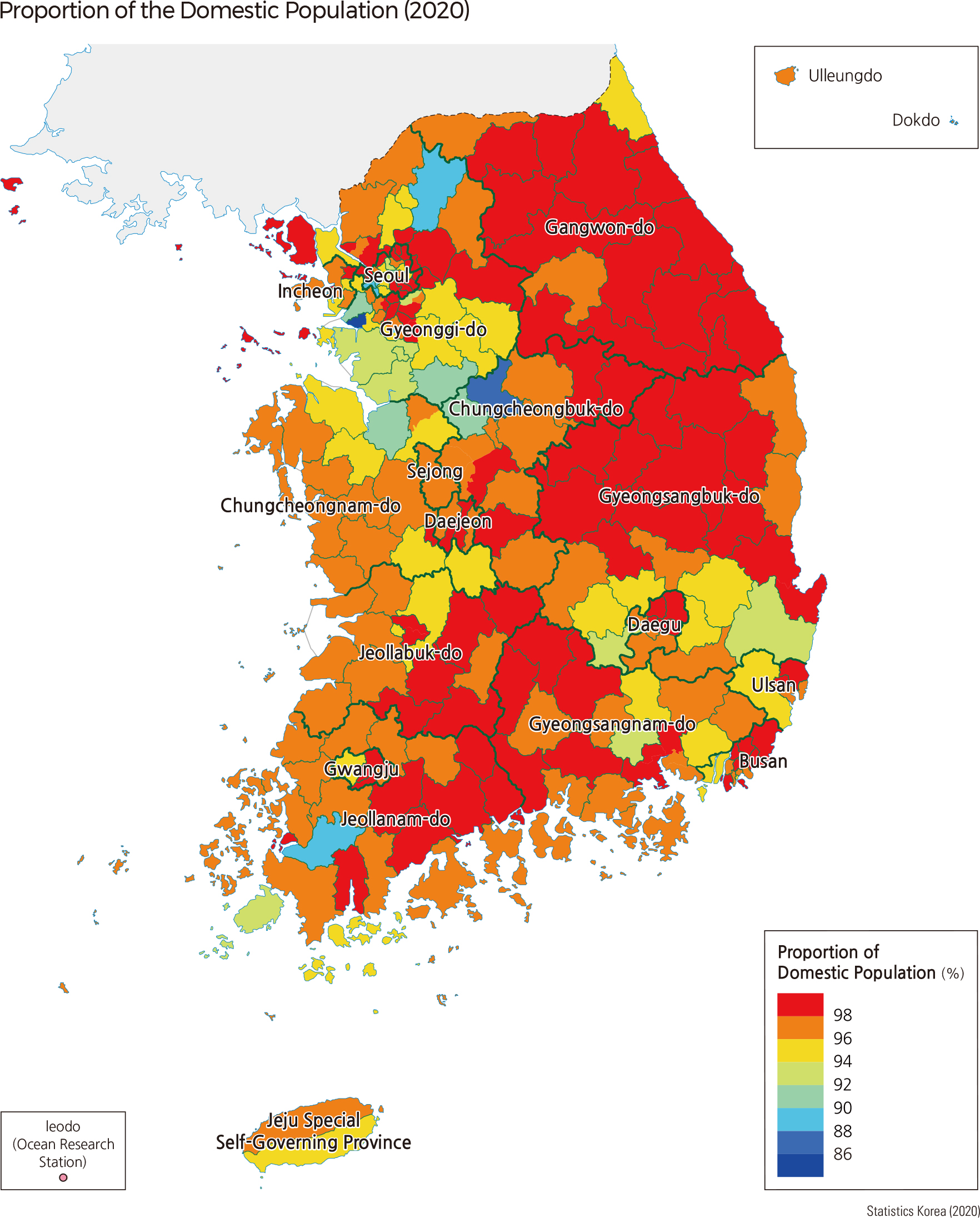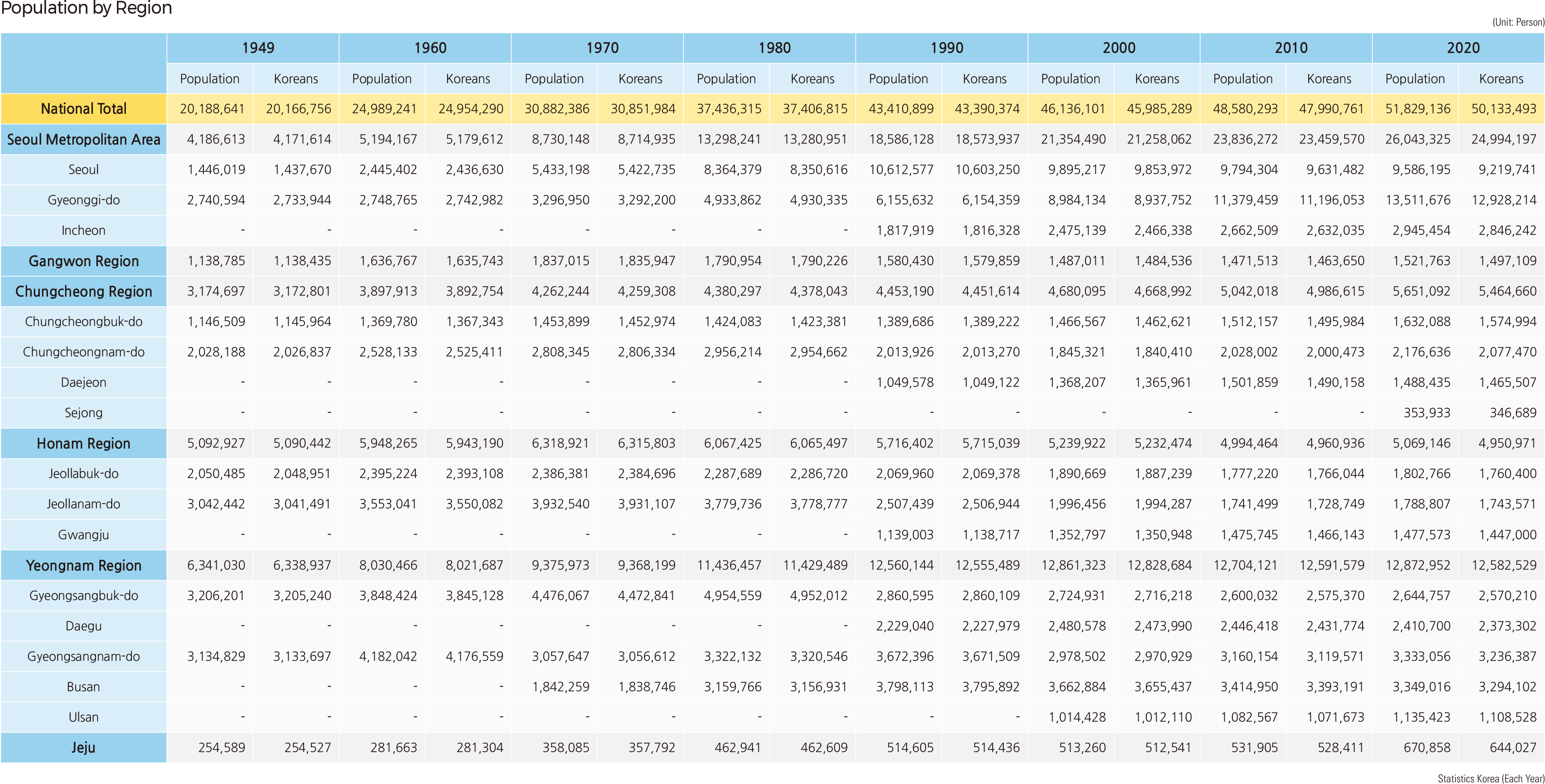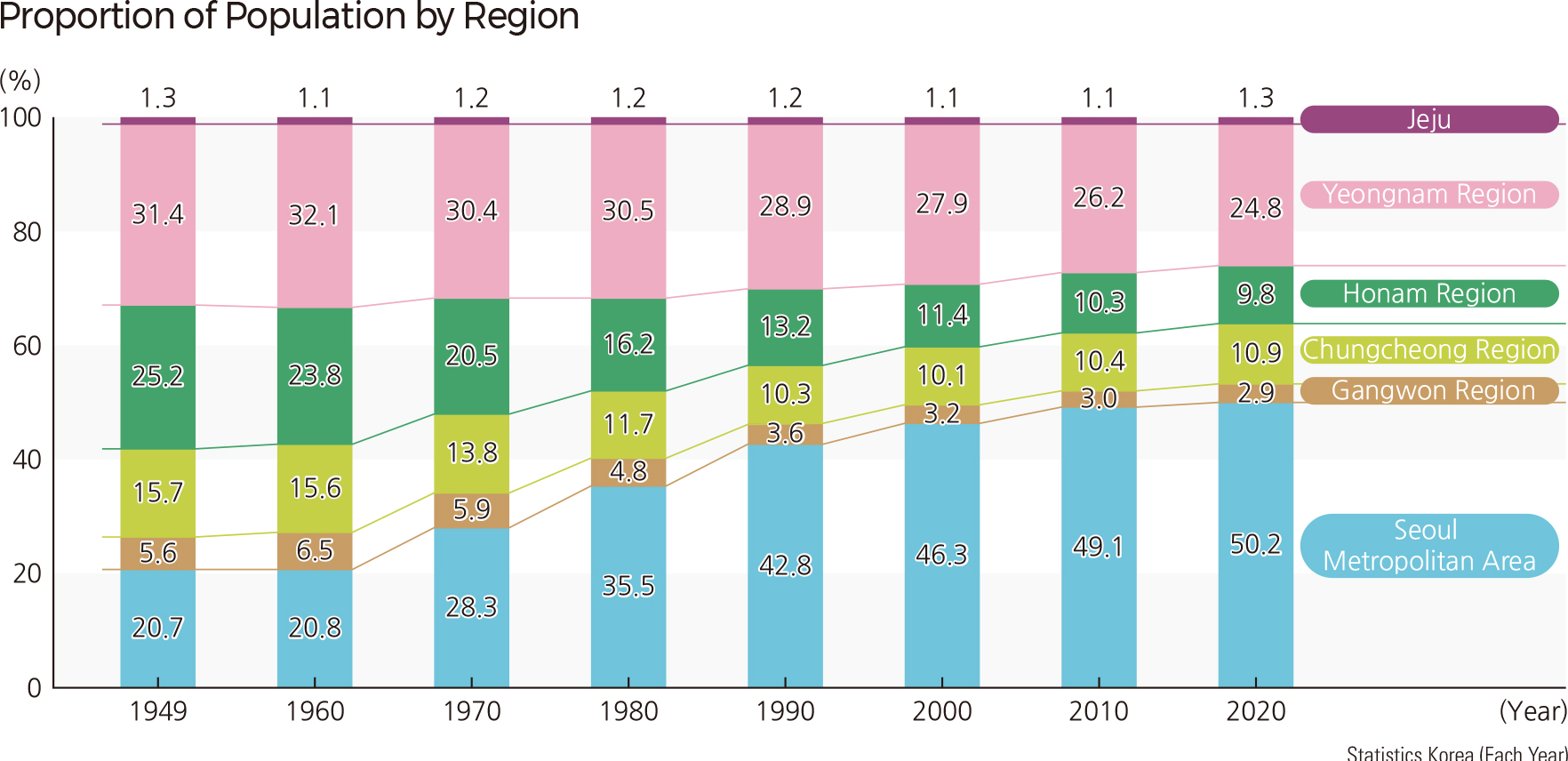English III 2021
Population refers to the number of people living in a region or a country. Its characteristics, such as size and structure, are used to establish national development plans and policies in various fields. Korea conducts population trend surveys on the size and structure of the population at a specific time and on factors that change the population, such as births, deaths, migrations, marriages, and divorces, that occur during a certain period of time. There are three types of the population count. First, the resident registration population counts only Koreans as of the last day of each month. Second, the census population surveys Koreans and foreigners every five years. Finally, the projected population is calculated based on birth, death, migration, and others. Korea’s census population increased rapidly from 20.2 million in 1940 to 48.6 million in 2010, and it has continuously increased to 51.8 million by 2020. However, the population growth rate tends to decrease from 1960 to 2020, with more than 2 percent in the 1960s and the 1970s, less than 1 percent in the 1980s, and 0.3 percent in 2017. Moreover, there will be negative growth in Korea’s population starting in 2030 due to a low birth rate, according to the 2017 median population estimate. The number of births continued to fall. It took 30 years for the number of births to fall by half from 1970 (1 million) to 2002 (0.5 million), but it took 18 years for the number of births to fall by half again between 2002 and 2020. A relatively large decline in the number of births per year has been spotted since 2015. On the other hand, the number of deaths increased from 2010 to 2020 while it remained at a similar level from the mid-1980s to the 2000s. The death rate tends to increase, in contrast to the birth rate. As a result, natural population growth has continued to fall and began to decline in 2020 (approximately 272,000 births and 304,000). Korea’s population is concentrated in cities. The rural population was larger than the urban population until the 1970s. However, as the urbanization rate in -eup areas has expanded, more than 90 percent of Korea’s population lives in cities as of 2020.
Korea’s population with foreigners in 2020 is approximately 2.6 times higher than that in 1949. Considering population counts by region, Korea’s population was evenly distributed among the Seoul Metropolitan Area, the Honam region, and the Yeongnam region by the 1970s. However, the population of the Seoul Metropolitan Area has been higher than that of the Honam and Yeongnam regions since the 1990s, and about 50 percent of Korea’s population resides in the Seoul Metropolitan Area as of 2020. While the proportions of the population in the Chungcheong region and Jeju-do are generally maintained at the same level, those in the Honam region, the Yeongnam region, and Gangwon-do continue to fall. Compared to other regions, the Honam region experienced a sharp decrease in proportions from 25.2 percent in 1949 to 9.8 percent in 2020. Meanwhile, from 1949 to 2000, the proportion of the domestic population was approximately 99.0 percent. However, it has gradually declined since 2000, with 98.9 percent in 2010 and 96.7 percent in 2020. The proportion of the domestic population also tends to decline in provinces. In 2020, the lowest proportion occurred in Jeju-do (96.0%) and the highest in Gangwon-do (98.4%).
|
